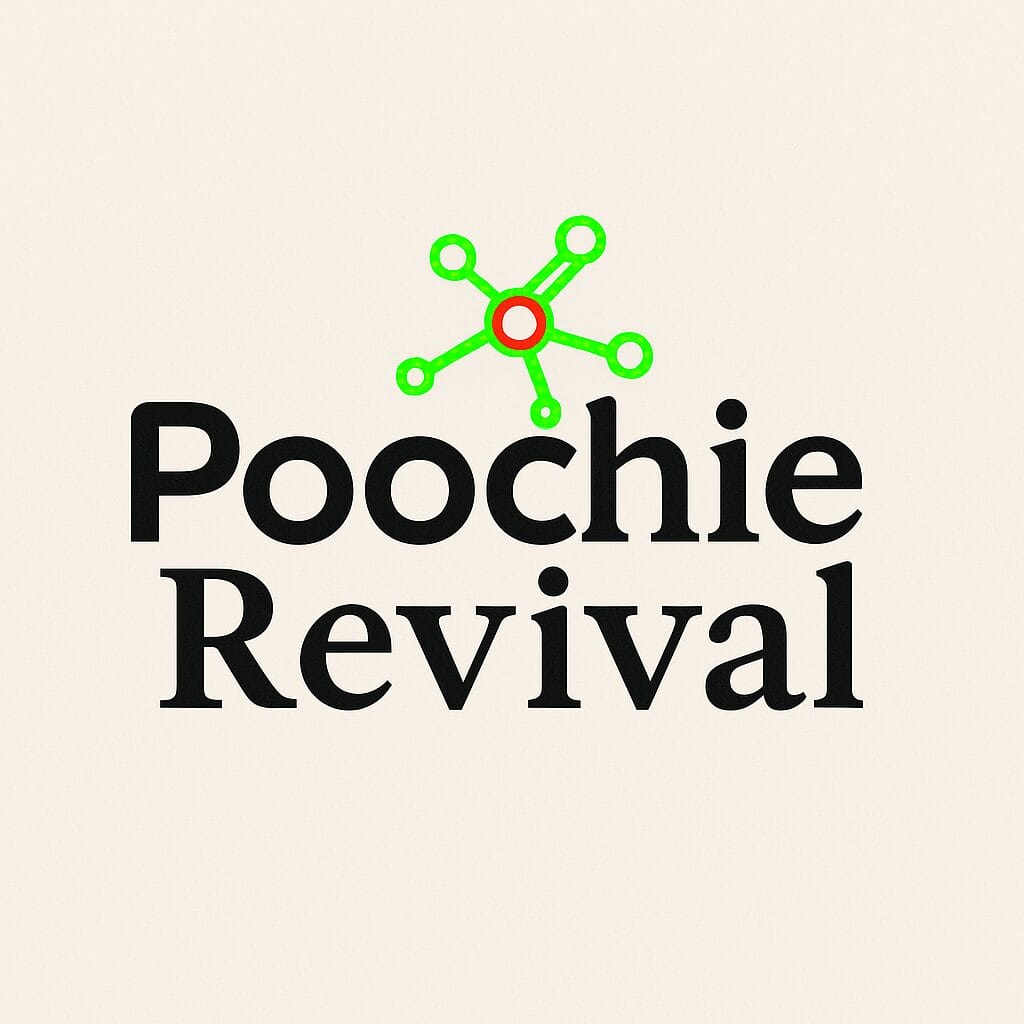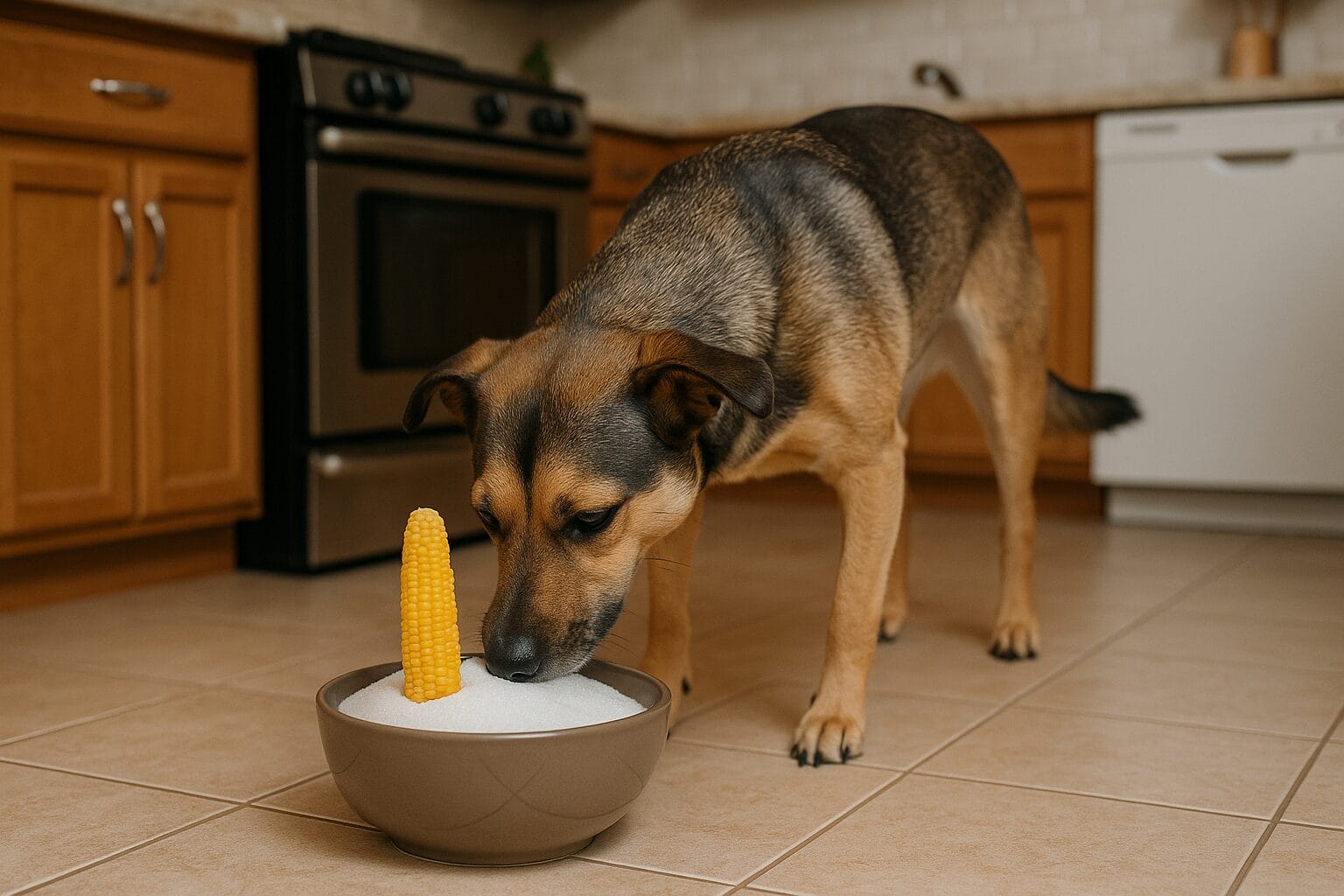Most often, dry dog foods are criticized for having so many carbohydrates. If the carbohydrates come from grains, the situation is even worse. This is a mix of several different things, spiced with confusion, misunderstandings, and beliefs. Let’s make it clear right away: carbohydrates are not dangerous or even harmful to dogs. But they are often unnecessary.
Carbohydrates provide two things for dogs:
- energy
- fiber
It’s important to understand that nothing else is obtained from carbohydrates. The fact that the body uses glucose in many different processes is a slightly different matter, but it’s still about burning calories. Glucose is not used to make anything. It is not a structural component of bones, it does not protect the nervous system, nor does it build muscles. Glucose does not function as antibodies nor does it transport oxygen. But glucose provides the energy to do all of that.
You think, therefore you are. The same applies to dogs, some more and some less. But thinking specifically works with glucose (of course, also with ketones, but that’s an exceptional situation).
When a dog gets excited and runs in circles and figure eights as fast as it can, its muscles use glucose as fuel. When it collapses to the ground a moment later, panting heavily with its tongue wrapped around its neck three times, the sugar used by its cells has run out.
So carbohydrates are very important. But all of this describes what glucose does in the body. It’s a different matter whether a dog needs to get carbohydrates from its food and if, or when, it does, whether there’s any harm in it.
Carbohydrate Need
A dog does not inherently need carbohydrates. Although low-carb and keto diets are popular, humans cannot sustain a carbohydrate-free diet for very long. Their slimming effect is not much related to the carbohydrates themselves, but to the energy deficit when sugars are left out and fat is not increased sufficiently. However, as a carnivore, a dog does not absolutely need carbohydrates from its food, nor does it go into ketosis.
The energy metabolism of all mammals at the cellular level is very similar. The brain and cells need their sugar, regardless of whether it’s a naturally vegan horse, an omnivorous human, or a meat-eating predator like dogs or cats. However, how the body processes the food eaten differs, and significantly.
A horse doesn’t inherently lack carbohydrates, but they are poorly digestible. The horse has adapted to this by compensating for quality with quantity, eating constantly, chewing its food, and breaking down the rest with the help of bacteria in the cecum. But the horse’s diet has little fat, so fatty acids come with the help of bacterial activity. Humans are helpless animals and must eat a comprehensive range of everything to get even something, because digestion is poor and metabolism inefficient (the fact that evolution spared humans is one of the great mysteries; we have no other specialization than adaptation. And opposable thumbs). Predators, on the other hand, get enough easily digestible meat and thus fats, but not carbohydrates. While horses make their fats in the intestines, the predators’ counterattack is to make sugars in the liver from proteins and fats.
Carbohydrate Need Due to Food
A dog’s carbohydrate need comes from its food. If a dog gets enough meat, it doesn’t need anything from which carbohydrates could be obtained. But when the amount of meat, genuinely edible fat grams, decreases, the calorie deficit must be patched with something. If additional energy is not obtained, the dog will experience the same as a human on a keto diet: it will lose weight.
Dogs have long been offered grains, porridges, bread, and human food scraps as a substitute for meat. In less than 10,000 years, the opportunist developed enough not to starve with such food. In fact, the ability to use carbohydrates, albeit limited, has probably always been present in dogs and is related to their ability to also eat carrion. When humans survived through adaptation, wolves and their relatives did exactly the same – it’s no coincidence that as narrow species, humans and wolves with their variations have spread everywhere on the planet.
Dry food manufacturers and those relying on dry foods like to claim that dogs must get carbohydrates from their diet. What they are truly saying is that something carbohydrate-rich must be added to the dog’s food because too little meat is given – but that doesn’t sound as convincing or marketable.
Health Effects of Carbohydrates
Carbohydrates have no health effects. If given too much, the dog gains weight. It gains weight from too much fat as well. The only real difference is that the storage form of carbohydrates and the use of glucose consume water, whereas fat storage displaces water to other tissues and burning fat for calories produces water.
However, a dog can be fed the same kind of carbohydrate-rich diet as its owner eats. When the owner develops type 2 diabetes, the dog asks if it can have a second serving or if they should go for a walk – insulin sensitivity doesn’t suffer, though.
It’s often warned that dogs’ teeth suffer from sugar consumption, just like humans. This isn’t entirely true either. The chemistry of a dog’s mouth is different from that of a human, and the problem with dogs’ dental calculus, sometimes also cavities, is due to eating things that don’t rinse off the teeth. The problem is thus in the structure of the food, not its composition.
All the issues blamed on carbohydrates mean all that
- isn’t obtained because something providing carbohydrates is used
- food item wrongly called a carbohydrate
Food and Lack of Food
Meat is too often called protein. Even when it contains only 12 percent protein and up to 20 percent fat. In suitable foods similarly called carbohydrates, like soy, there is more protein than in poor meats, but they are still not called proteins. Dry foods contain all, but they are not called protein, fat, or carbohydrate as needed.
This means that food items should not be called by a selected name of the nutrient they provide. Not only is it a mistake and wrong, but it also teaches to think about things on incorrect grounds.
Everyone is familiar with the saying: the dose makes the poison. This applies to foods as well.
If a dog is given only pollock, it will quickly become a sick dog. The reason is the lack of fat.
If a dog is given only fat, it will quickly become a sick dog. The reason is the lack of protein.
If a dog is given only oatmeal or mashed potatoes, it will quickly become a sick dog. The reason is that there is too little protein or it is of poor quality and fat is missing.
The food problems blamed on carbohydrates are not inherently related to carbohydrates. They are due to the food item containing carbohydrates. Either its quantity, quality, or both.
When dry food contains 4% meat, its problems are not due to the rice providing carbohydrates. In fact, rice and its carbohydrates are the only things preventing the dog from starving. The problems are because there is only 4% meat.
When the corn in dry food causes air quality problems – the dog farts so much that the village is condemned as polluted – it’s not due to the carbohydrates, but because the corn used as a food item doesn’t digest. For some reason, this is extremely difficult for Finns to understand, even though we are a nation that switched from turnips to potatoes. Raw potatoes don’t digest, but cooked ones do very well.
Of course, undigested carbohydrates taste good to intestinal bacteria and at worst disrupt the system. If corn is replaced with cooked corn starch, or even pure sugar, nothing reaches the bacteria. Everything is absorbed and used for energy. But similarly, bacteria also eat proteins, and yet it’s not explained how harmful proteins are. A significant portion of the problems with raw-fed dogs is due to undigested protein because of tendons and cartilage.
The fact that intestinal symptoms or yeast are explained by undigested carbohydrates tells what happens. The cause is still the indigestibility of the food item containing carbohydrates. Exactly the same problems can be explained by undigested protein, but the cause itself is not in the proteins, but in the indigestibility of the food item providing proteins. The difference is completely clear and significant.
Fat is the only thing that doesn’t feed bacteria. It kills them and therefore causes so-called fat diarrhea when given in excess.
Dry foods cause yeast and intestinal symptoms in dogs; all of which veterinarians very unprofessionally diagnose as allergies. When they prescribe dry food, which is equally unprofessionally and totally incorrectly called an elimination diet, they try to solve the situation by giving food with different raw materials, hoping that its digestibility is better or the structure is such that it doesn’t excite the colon bacteria. But even in this case, it’s not about carbohydrates – whose amount is always increased in those foods illegally called medicinal or unprofessionally functional.
In fact, in the entire history of dry foods, the problem has never been inherently in carbohydrates or the raw material that provided the carbohydrates (yes, corn is a kind of exception). Previously, the root cause was the lack of meat. Today, with fresh meats, the core problem is likely the quality of the animal-derived products called meats. In other words, the lack of quality.
The situation is interesting. All that is blamed on carbohydrates is actually due to what is called meat. And both are called by the wrong name.
Use of Carbohydrates
Since carbohydrates are not needed, foods that provide carbohydrates are not needed. But that choice applies to raw feeders. Those using dry food have only two tools:
- if you want to reduce carbohydrates, you must provide energy foods like 30/20
- if you want to give more carbohydrates, you must provide poorer maintenance food like 22/10
Those giving dry food should think more about what the ingredients truly read than about carbohydrates.
Those raw materials that provide carbohydrates can be used to support therapeutic diets. For instance, by taking genuine extra energy from glucose syrup or regular syrup. Or by using potatoes or porridges to fill the intestines.
It’s all about understanding a few basic things:
- carbohydrates are not dangerous
- the raw material containing carbohydrates can be a problem
- poor-quality meat and bones have caused relatively more harm than grains or potatoes/sweet potatoes ever



